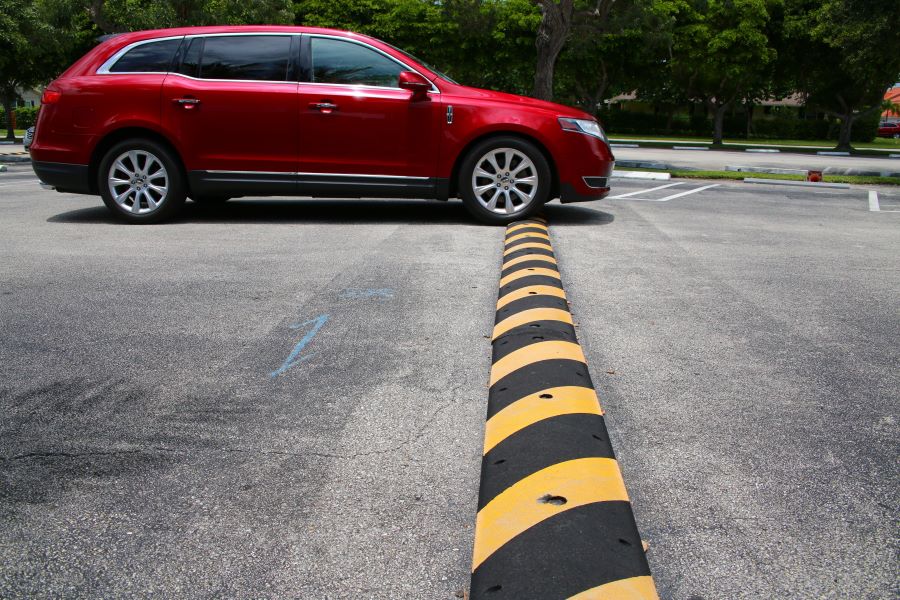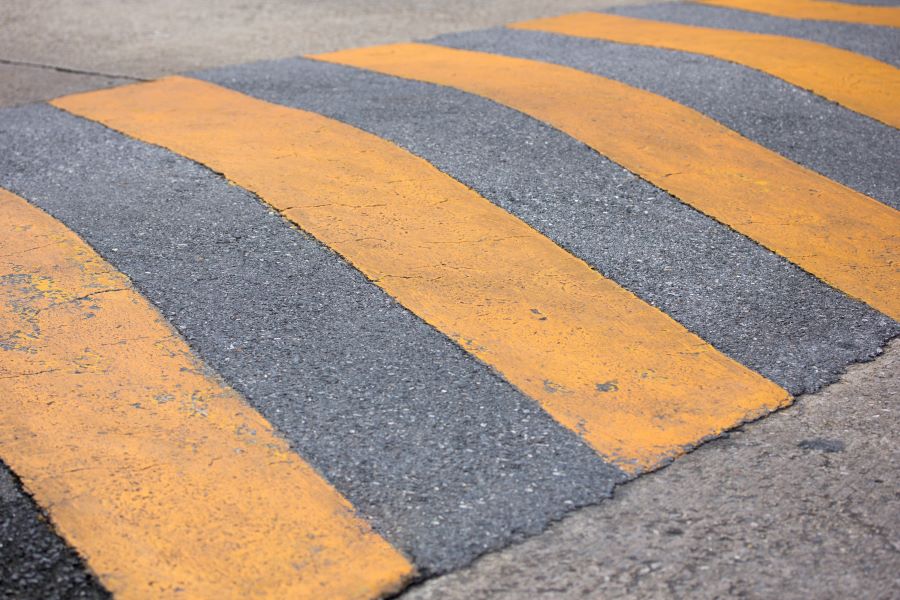Road humps are an essential part of road safety and are used as a calming measure for traffic. The purpose of road humps is to slow down drivers in areas that may have a high volume of pedestrians such as residential areas, schools, and hospitals.
In the Philippines, an ordinance has been implemented to give Local Government Units (LGUs) the freedom to put up road humps for the safety of their constituents, as long as these road humps adhere to the standards of the DILG.
In this article, we dive into what are speed humps, what is their purpose, and what are its regulations in the Philippines. Keep reading to know more!

What are Speed Humps?
Road humps are calming measures that can be found on the road. These half-moon road obstacles are usually made of concrete, rubber, or asphalt to force drivers to slow down to 25 to 30 km/h.
Speed humps can usually be found on local roads due to the high volume of pedestrians that can be found there. On wider roads, you’ll encounter these vertical obstacles near hospitals, churches, and schools.
What is the Purpose of Road Humps?
The purpose of road humps is to make the roads safer for motorists, pedestrians, and drivers. Road humps are a traffic intervention that was made to force drivers and motorists to slow down lest they want to damage their cars or cause an accident.
These traffic intervention tools are also helpful in keeping road users compliant with the speed limit, especially on local roads that are smaller than national roads.
In the Philippines, the Department of Interior and Local Government (DILG) incorporates speed humps onto roads as a traffic calming instrument that’s used to make bikers and pedestrians safer on the road.
Aside from its safety features, road humps can also improve the quality of life in that area. Safe to say that we can classify road humps as a traffic management tool that can improve the quality of life for everyone in the community.

Increased Safety
In 2022, the World Health Organization (WHO) published a fact sheet about road traffic injuries. This sheet showed that approximately 1.3 million people die annually due to traffic crashes and that this is the leading cause of the death of individuals aged 5 to 29 years old.
The same WHO fact sheet also stated that cyclists, pedestrians, and motorcyclists account for more than half of traffic fatalities across the globe. Given these extreme numbers, it’s clear that steps must be taken to make more walkable cities all over the world.
Speed humps are an excellent tool to increase the safety of the roads, especially in the Philippines where 18% of road accidents are caused by overspeeding. In fact, when vehicles are driving at higher speeds, the severity of the crash also increases due to kinetic energy. By forcing drivers to lower their speed, they can react on time to road hazards or pedestrians on the street better and contribute to road safety.
Improved Quality of Life
Well-designed speed humps can help cars slow down, give pedestrians a safe place to cross, and aid in beautifying the community.
Some LGUs in Metro Manila have teamed up with urban planners and architects to improve the quality of life for their constituents.
For example, around Makati, you’ll find broad speed humps that also functions as a pedestrian crossing that is called “Urban Patios.” These patios have helped reduce the number of traffic accidents while also beautifying the central business district of Makati.
Are There Existing Regulations for Road Humps in the Philippines?
Due to the numerous subpar speed humps that have been erected all over the country, the Philippine government decided to write regulations to standardize these traffic tools.
LGUs have been empowered by the national government to erect speed humps. The Mayor’s Office must review the proposed speed humps plan to ensure that it meets the design, construction, and methodology guidelines and standards that are prescribed by the government.
The construction of speed bumps has also been regulated to only be allowed along hospitals, private and public subdivisions, and schools to proliferate a safe traffic environment.
Standard Size of Road Humps in the Philippines
The standard size of road humps is as follows:
- End-to-end length: 3.7m to 4.25m
- Measurement at peak: 7.5cm to 10cm
*Speed humps must have drainages on either side when spanning the width of the roads.

Making Roads Safer With Rua Seguridad
The Philippines’ local roads benefit from road humps because of how they can slow down drivers in high-volume pedestrian areas. However, the lack of maintenance of these calming measures can be detrimental to drivers, their vehicles, and pedestrians.
It’s no surprise that motorcycle riders and car drivers are constantly trying to avoid poorly constructed humps. This is because these humps can damage their vehicle or knock them out of balance since they’re not smooth.
One way to solve this is for your LGU to partner with a trustworthy supplier of asphalt products to ensure that these calming tools stand the test of numerous vehicles, extreme weather, and time. If you’re looking for an asphalt provider that can provide your area with high-quality materials, you can count on us at Rua Seguridad.
Rua Seguridad has over a decade of experience supplying individuals, companies, and governments with the materials they need to make the roads a safer place. Contact us today to know more about our offerings.



